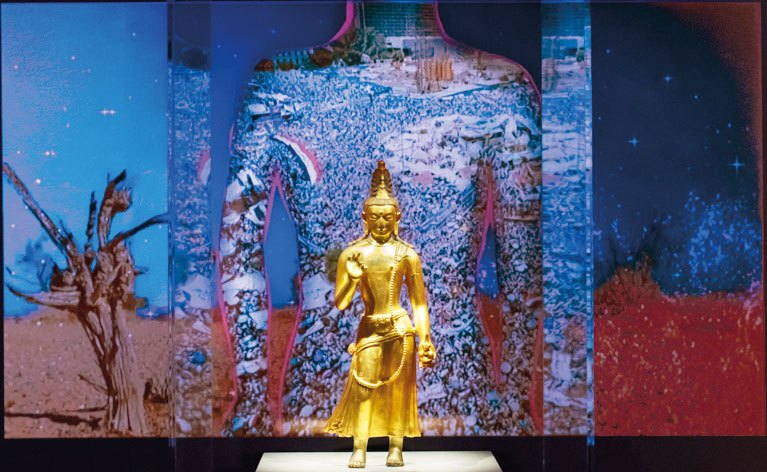NAVIGATING NEW YORK’S ART SCENE
AUGUST 31, 2018
NAVIGATING NEW YORK’S ART SCENE
The Big Apple’s best-kept secrets are revealed by Beth Citron, who acquaints us with some of her favourite exhibitions and installations — including one in a serene yoga school
Chitra Ganesh, Rainbow Body (still), 2018, digital animation
Courtesy of The Artist
Amidst overdetermined gentrification propelling the punk from seemingly every city corner, New York’s best-kept secrets remain thankfully hidden (at least to its real estate developers) in plain sight (well, as long as you’ve got Google Maps). While the city’s most prominent cultural attractions are deservedly popular, needing perhaps no further introduction, sites a bit further afield across three boroughs can also excite discerning locals and tourists alike.
The focus of my New York is the Rubin Museum of Art, an institution dedicated to art and ideas from the Himalayas and South Asia, where I am the curator of modern and contemporary art. Since 2010 — shortly after returning from Mumbai, where I spent two-and-a-half years pursuing my PhD in art history — I’ve been integrating modern and contemporary art connected to South Asia into the museum’s galleries. Two current exhibitions that I’ve had the privilege and pleasure to develop in 2018 in relation to the museum’s annual thematic consideration of ‘The Future’ exemplify this curatorial programme — A Lost Future: The Otolith Group and Chitra Ganesh: The Scorpion Gesture.
Chitra Ganesh, Silhouette in the Graveyard, 2018, Digital Animation
Courtesy of The Artist
A Lost Future: The Otolith Group, on view from June 1 to September 17, 2018, is the second chapter of an exhibition trilogy challenging existing histories and speculative futures across cultures in West Bengal. The Otolith Group — an award-winning collaboration established in 2002 by artists and theorists Anjalika Sagar and Kodwo Eshun — engages with cultural and political legacies of non-aligned movements, new media, black studies, Afrofuturism, and Indofuturism, primarily through the moving image. The exhibition centres on The Otolith Group’s newly completed feature-length film O Horizon, which studies Visva-Bharati, the university founded in Santiniketan in 1921 by Rabindranath Tagore, and the surrounding areas of Birbhum district. Commissioned by Bauhaus imaginista and co-produced by the Rubin Museum of Art, with the kind support of Mumbai gallery Project 88, O Horizon was filmed, recorded and researched over a period of five years and looks at the environmental and other effects of Tagore’s Santiniketan, a long century later. The staggeringly beautiful and important film is presented as an installation in the museum’s galleries, with custom-made seating that resembles the form of the learning circles under trees proposed by Tagore. Also on view in the galleries is an evocative series of digital collages that integrate the past and present of Santiniketan through archival images.
Rubin museum of art, New York
Rubin museum of art, New York





